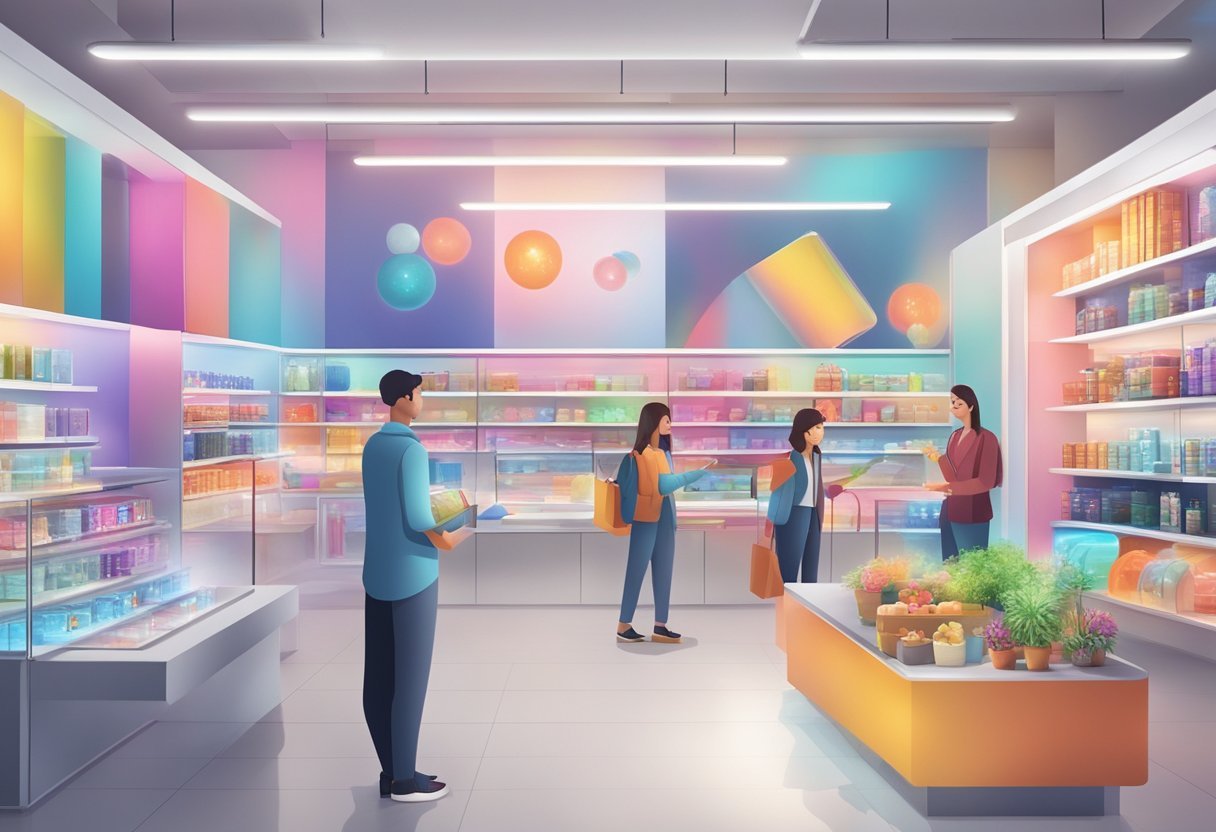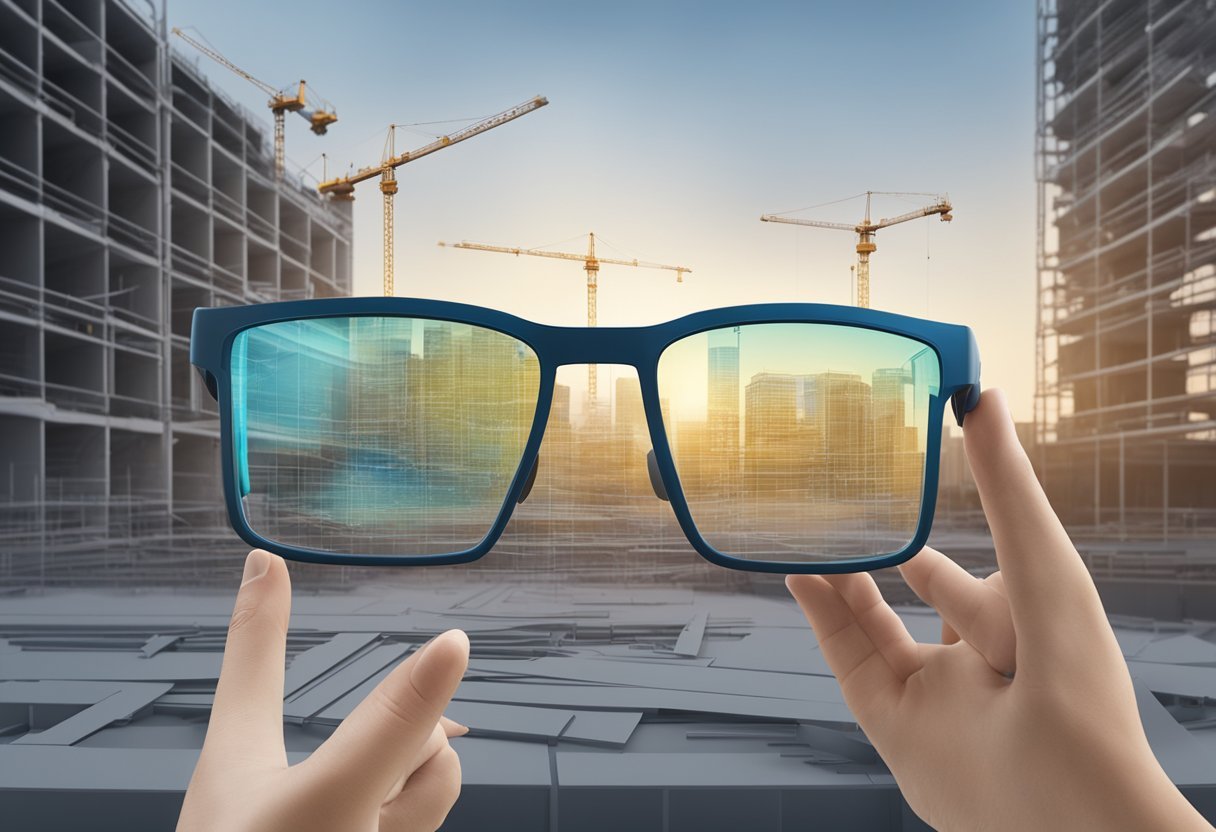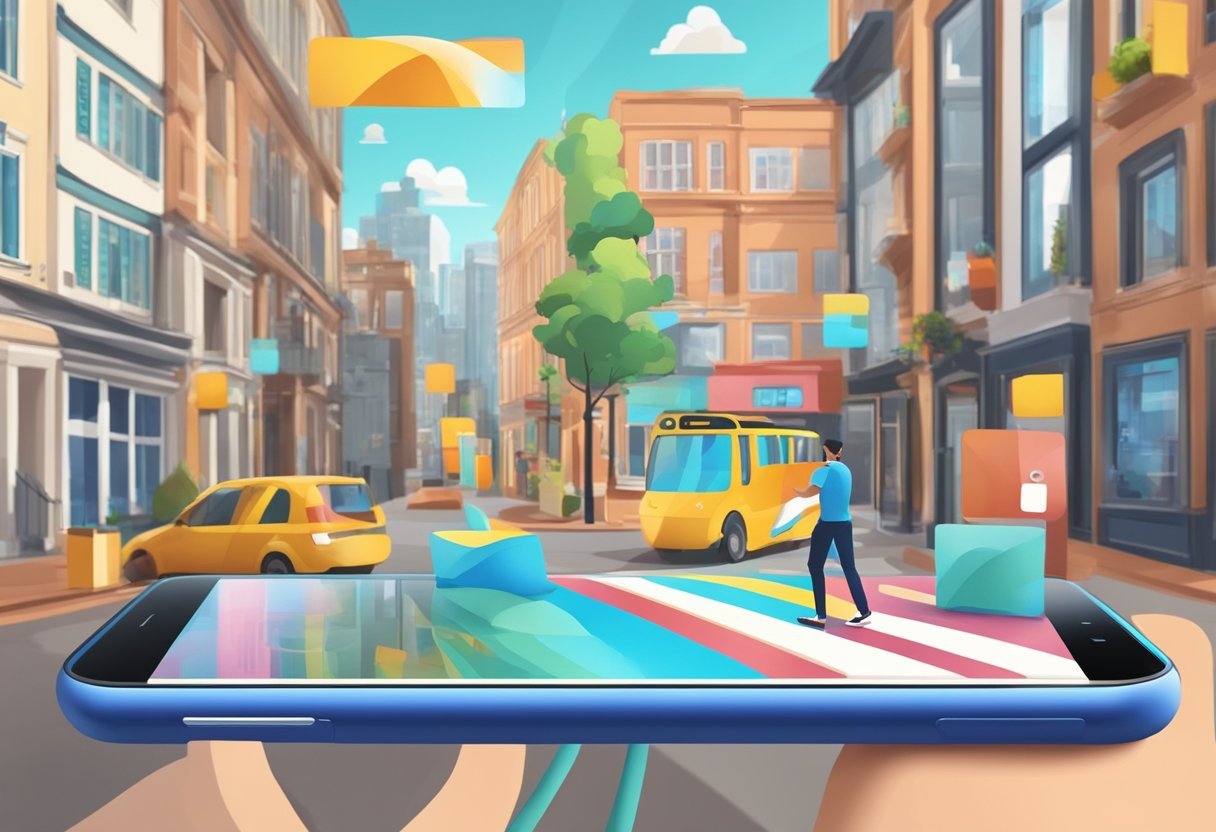Shopping in augmented reality (AR) is an emerging trend that is revolutionizing the way people shop. With AR, customers can try on clothes, see how furniture would look in their homes, or even test drive a car, all from the comfort of their own devices. AR shopping is becoming increasingly popular as more retailers and brands are implementing AR technology to enhance the customer experience. In this blog post, I will share with you the benefits, precautions and tips for shopping in augmented reality store.
The evolution of shopping in AR has been a gradual process. The technology has been around for a while, but it has only recently become more accessible to consumers. As smartphones and other devices become more powerful, AR is becoming easier to use and more immersive. This has led to a surge in demand for AR shopping experiences, as customers seek out new and innovative ways to shop.
AR technology provides retailers with a powerful tool to enhance the customer experience. By using AR, retailers can create more engaging and interactive shopping experiences that are tailored to the needs of their customers. This can lead to increased customer satisfaction and loyalty, as well as higher sales and profits for the retailer. As AR technology continues to evolve, we can expect to see even more exciting and innovative ways to shop in the future.
Key Takeaways
- AR shopping is an emerging trend that is revolutionizing the way people shop.
- The evolution of shopping in AR has been a gradual process.
- AR technology provides retailers with a powerful tool to enhance the customer experience.
The Evolution of Shopping in Augmented Reality
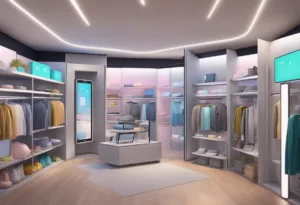
From Virtual Reality to Augmented Reality
Virtual reality (VR) and augmented reality (AR) have been around for years, but it’s only in recent times that they’ve started to make a significant impact on the retail industry. While VR is a fully immersive experience, AR overlays digital information onto the real world, making it a more practical tool for retail. The use of AR in retail has exploded in recent years, with companies like IKEA and Nike using it to enhance the shopping experience for their customers.
AR has been used in various ways, such as allowing customers to virtually try on clothes or see how furniture would look in their home. This technology has allowed retailers to provide a more personalized shopping experience, which has been shown to increase customer satisfaction and loyalty. The use of AR also helps retailers to reduce the number of returns, as customers can see how the product will look before they buy it.
Impact of the Pandemic on AR Shopping Adoption
The COVID-19 pandemic has accelerated the adoption of AR shopping. With many physical stores closed or operating at reduced capacity, retailers have had to find new ways to reach their customers. AR shopping has provided a solution, allowing customers to shop from the comfort of their own homes. The pandemic has also led to an increased focus on hygiene, and AR shopping has helped to reduce the need for physical contact between customers and products.
AR shopping has also provided a lifeline for small businesses during the pandemic. With many small businesses struggling to survive, AR shopping has allowed them to reach a wider audience and compete with larger retailers. The technology has allowed small businesses to provide a more personalized shopping experience, which has helped to build customer loyalty.
The use of AR in retail has come a long way in recent years, with the pandemic accelerating its adoption. The technology has allowed retailers to provide a more personalized shopping experience, reduce the number of returns, and reach a wider audience. As the technology continues to evolve, it’s likely that we’ll see even more innovative uses of AR in retail in the future.
Tips for Shopping in Augmented Reality:

- Ensure your device is compatible with the AR app or feature you’re planning to use.
- Have a stable internet connection to avoid interruptions during your AR experience.
- Make sure the room is well-lit for the best AR visualization.
- Clear the space where you intend to project the AR objects for accurate sizing and placement.
- Familiarize yourself with the AR app’s controls and features for easier navigation.
- Use AR to compare different product options side by side when possible.
- Take screenshots or record your AR session if you want to review your options later.
- Check for any updates to the AR app for the latest features and improvements.
- Read reviews and ratings of the AR app to ensure a good user experience.
- Be mindful of privacy and security settings within the AR app.
Benefits of Shopping in Augmented Reality:
- Try before you buy: visualize products in your own space before purchasing.
- Saves time: reduces the need to visit multiple stores or return unsuitable products.
- Enhances decision-making: see how products look from various angles and in different environments.
- Personalized shopping: customize products to your preference in a virtual setting.
- Access to a wider range: explore products that may not be available in a nearby physical store.
- Interactive experience: engage with products in an immersive way.
- Convenient and accessible: shop from anywhere, at any time.
- Innovative and fun: enjoy a cutting-edge and entertaining way to shop.
- Reduces uncertainty: gain a better understanding of product dimensions and aesthetics.
- Environmentally friendly: potentially reduces the carbon footprint by limiting physical returns.
Precautions for Shopping in Augmented Reality:
- Verify the accuracy of AR visualization to ensure true-to-life sizes and colors.
- Protect personal information when using AR apps by checking the app’s privacy policy.
- Be aware of your surroundings to avoid accidents or injuries while engaged in AR.
- Ensure the AR app is from a reputable source to avoid downloading malicious software.
- Understand the return policy in case the product does not meet expectations after AR visualization.
- Be cautious of overspending, as AR shopping can be very engaging and persuasive.
- Consider the environmental impact of your purchases, even though AR might reduce physical returns.
- Do not rely solely on AR; read product specifications and reviews for a comprehensive understanding.
- Keep the app updated to protect against security vulnerabilities.
- Monitor data usage if you’re on a limited plan, as AR apps can consume significant data.
Technological Foundations of AR Shopping
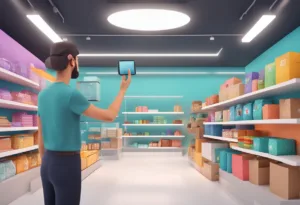
Smartphone Penetration and AR
The widespread adoption of smartphones has been a key factor in the growth of augmented reality (AR) technology. With smartphone penetration rates increasing year on year, retailers are recognizing the potential of AR to enhance the shopping experience for customers. By using their smartphones to access AR applications, customers can visualize products in a more immersive way, which can increase engagement and ultimately lead to higher sales.
AI and Computer Vision in Retail
Artificial intelligence (AI) and computer vision are also playing an increasingly important role in the retail sector. By using machine learning algorithms to analyze customer data, retailers can gain insights into customer behavior and preferences, which can inform product development and marketing strategies. Computer vision technology can also be used to track customer movements in-store, providing retailers with valuable data on how customers interact with products and store layouts.
In the context of AR shopping, AI and computer vision can be used to create more personalized shopping experiences. By analyzing customer data, retailers can offer customized product recommendations and suggest complementary items based on the customer’s past purchases. Computer vision can also be used to recognize products in the real world and provide customers with additional information, such as reviews and pricing information.
The combination of smartphone penetration, AI, and computer vision is driving the growth of AR shopping. As retailers continue to invest in these technologies, we can expect to see more innovative AR applications that enhance the shopping experience for customers.
Enhancing the Customer Experience with AR

Augmented Reality (AR) is revolutionizing the way customers shop by providing them with an immersive shopping experience. By integrating AR technology, retailers can offer virtual try-on experiences and immersive product interactions that enhance the customer journey. In this section, we will explore how AR enhances the customer experience and the different ways retailers can use it to provide a unique shopping experience.
Virtual Try-On Experiences
One of the most significant advantages of AR is its ability to offer virtual try-on experiences. Customers can try on products virtually, from the comfort of their homes, before making a purchase. This feature is particularly useful for fashion and beauty retailers, where customers can try on clothes, makeup, and accessories before buying them.
AR technology allows customers to see how products will look on them in real-time, with 3D content that is accurate and realistic. This feature not only enhances the customer experience but also reduces the number of returns and exchanges, as customers can see how the product will look on them before making a purchase.
Immersive Product Interactions
AR technology also offers immersive product interactions, allowing customers to interact with products in a way that was not possible before. Customers can view products in 3D, rotate them, zoom in and out, and see them from different angles. This feature is particularly useful for retailers selling complex products, such as furniture, where customers can see how the product will look in their homes before making a purchase.
Immersive product interactions also allow retailers to showcase their products in a unique way, providing customers with a memorable shopping experience. By creating AR experiences that are interactive and engaging, retailers can increase customer engagement and loyalty, leading to higher sales and revenue.
AR technology is changing the way customers shop by providing them with an immersive and unique shopping experience. By offering virtual try-on experiences and immersive product interactions, retailers can enhance the customer journey and increase customer engagement and loyalty. As AR technology continues to evolve, we can expect to see more retailers adopting this technology to provide customers with a shopping experience that is both memorable and enjoyable.
AR in Retail: Current Implementations and Case Studies
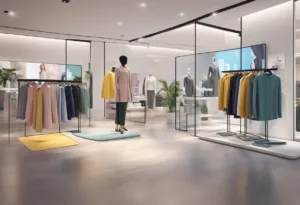
Augmented Reality (AR) has the potential to revolutionize the way consumers shop. With AR, consumers can see how products would look in their homes or on their bodies before making a purchase. This technology has been implemented by several retailers, including furniture and home furnishing stores and fashion and clothing retailers.
Furniture and Home Furnishing
One of the most popular examples of AR in furniture and home furnishing is IKEA Place. This app allows customers to see how furniture would look in their homes before making a purchase. The app uses the camera on the customer’s smartphone to create a 3D model of the room and then overlays the furniture on top of it. This allows customers to see how the furniture would fit in the space and whether or not it matches the existing decor.
Fashion and Clothing Retailers
AR has also been implemented by fashion and clothing retailers. Retailers such as H&M and GAP have implemented AR technology to allow customers to try on clothes virtually. This technology allows customers to see how clothes would look on them without having to physically try them on. This technology has been particularly useful during the COVID-19 pandemic, where customers are less likely to want to try on clothes in-store.
AR technology has been implemented by several retailers to provide customers with a more immersive shopping experience. This technology has been particularly useful in the furniture and home furnishing industry, as well as the fashion and clothing industry. With AR, customers can see how products would look in their homes or on their bodies before making a purchase, providing them with more confidence in their buying decisions.
The Business Impact of AR in Retail
Augmented Reality (AR) has revolutionized the retail industry by providing customers with a unique shopping experience. This technology has a significant impact on various aspects of retail business operations, including conversion rates, sales metrics, supply chain, and inventory management.
Conversion Rates and Sales Metrics
AR technology has a direct impact on conversion rates and sales metrics. AR allows customers to interact with products in a virtual environment, providing them with a better understanding of the product’s features and benefits.
This technology enables customers to visualize products in their homes, which helps increase the likelihood of a purchase. According to a study by Retail Perceptions, 61% of customers prefer to shop at stores that offer AR experiences. This preference indicates that AR technology can significantly impact conversion rates and sales metrics.
Supply Chain and Inventory Management
AR technology can impact supply chain and inventory management by providing retailers with real-time data on customer preferences and behavior. This data can help retailers optimize their inventory levels and reduce the risk of overstocking or understocking. By providing customers with a virtual try-on experience, retailers can also reduce the number of returns and exchanges, which can help reduce the overall cost of operations.
AR technology can also impact eCommerce operations by providing customers with a unique shopping experience. By integrating AR technology into their eCommerce platforms, retailers can provide customers with a virtual shopping experience that is similar to shopping in a physical store. This technology can help increase customer engagement and satisfaction, which can lead to increased sales and revenue.
AR technology has a significant impact on various aspects of retail business operations, including conversion rates, sales metrics, supply chain, and inventory management. By leveraging this technology, retailers can provide customers with a unique shopping experience that can help increase sales and revenue.
Frequently Asked Questions

How are retailers integrating augmented reality into the shopping experience?
Retailers are integrating augmented reality into the shopping experience by allowing customers to virtually try on products. This technology bridges the gap between the physical and virtual worlds, enabling customers to see how products look and fit before making a purchase. Retailers are also using augmented reality to enhance product descriptions and create interactive experiences for customers.
What are some popular augmented reality apps for enhancing online shopping?
There are several popular augmented reality apps for enhancing online shopping, including IKEA Place, Sephora Virtual Artist, and Snapchat’s Shoppable AR. These apps allow customers to see how products look in their homes or on their faces before making a purchase.
Which major retailers have adopted augmented reality for in-store use?
Major retailers such as Lowe’s, Sephora, and Home Depot have adopted augmented reality for in-store use. These retailers use augmented reality to enhance the shopping experience by allowing customers to see how products would look in their homes or on their faces.
Can you list examples of how augmented reality has improved ecommerce?
Augmented reality has improved ecommerce by providing customers with a more interactive and engaging shopping experience. Customers can see how products look and fit before making a purchase, which reduces the likelihood of returns. Augmented reality has also increased customer engagement and retention rates, which ultimately leads to increased sales and revenue for retailers.
What are some potential drawbacks of using augmented reality in retail?
Some potential drawbacks of using augmented reality in retail include the cost of implementing the technology, the need for high-quality product images, and the potential for technical glitches. Some customers may not be comfortable with using augmented reality or may not have access to the necessary technology.
How might augmented reality change the future of online and in-store shopping?
Augmented reality has the potential to change the future of online and in-store shopping by providing customers with a more interactive and engaging shopping experience. Retailers can use augmented reality to enhance product descriptions, create interactive experiences, and allow customers to see how products look and fit before making a purchase. This technology may also lead to increased customer engagement and retention rates, ultimately leading to increased sales and revenue for retailers.

